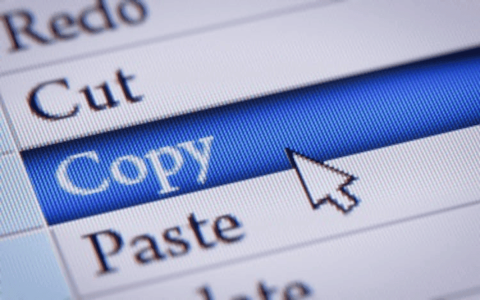Important Role of Plagiarism Detection Tools in Modern Education
Plagiarism detection tools have become ubiquitous in educational institutions worldwide, often perceived as watchdogs of academic honesty. However, their true role is far more nuanced. These systems, which rely on algorithmic pattern recognition rather than judgment, are valuable aids—but not infallible arbiters of integrity. Their efficacy depends on informed use, ethical teaching practices, and transparent institutional frameworks. This long-form article examines how such tools work, their limitations, their influence on student behavior, and the responsibilities of educators and institutions. In doing so, it repositions plagiarism software as part of a broader ecosystem of academic support—not a substitute for it.
Understanding the Technology Behind Plagiarism Detection
At their core, plagiarism checkers are sophisticated software applications that compare a given text against extensive repositories of previously published content. These databases include academic journals, websites, student submissions, and even proprietary content, depending on the platform’s partnerships.
The most common techniques employed include string matching, fingerprinting, and syntactic pattern recognition. More advanced tools may employ machine learning to better assess linguistic context. However, even these remain fundamentally superficial in their assessment—flagging textual overlap, not evaluating originality or intent.
Critically, similarity scores should never be mistaken for proof of plagiarism. Quotes, citations, and generic academic phrasing may all inflate these numbers. Conversely, paraphrased material—especially if cleverly altered—may go undetected. This is why human review remains essential in interpreting results and determining ethical breaches.
The Effectiveness Divide: Capabilities vs. Expectations
One of the core challenges surrounding plagiarism checkers is the widespread assumption that they are exhaustive or infallible. In reality, their effectiveness is inherently limited by two factors:
- Database breadth and depth: Not all checkers access the same repositories. Public web content may be well represented, but subscription-based journals, books, and regional publications often aren’t indexed.
- Surface-level analysis: Most software cannot detect the theft of ideas, conceptual mimicry, or structural imitation. If a student rewords a source while retaining its core argument, many tools will miss it entirely.
The result is a paradox: high scores can be false positives, and low scores can still conceal unethical behavior. Without educator involvement, these discrepancies can create confusion, unfair outcomes, and a misplaced sense of security—or injustice.
Student Behavior: The Double-Edged Impact
The influence of plagiarism detection software on students is as complex as the tools themselves. While many learners appreciate the ability to preemptively check their work for citation errors or accidental duplication, others respond with counterproductive strategies or anxiety.
Key behavioral shifts include:
- Improved citation habits due to increased awareness and exposure to academic standards.
- Proactive self-checking, particularly before final submission, indicating tool use as a safety net.
- Overemphasis on reducing match scores rather than improving clarity or originality of thought.
- Mechanical paraphrasing as a workaround—changing words without engaging with the material meaningfully.
- Uncertainty and mistrust, particularly when flagged for properly cited or innocuous content.
To mitigate these effects, institutions must pair these tools with instruction. When positioned as a developmental aid—rather than a disciplinary mechanism—plagiarism software can foster deeper learning and confidence.
The Educator’s Role in Interpretation and Instruction
From the faculty perspective, plagiarism detection tools are valuable for identifying potential issues in high-volume grading environments. They assist in upholding academic integrity policies and streamlining the evaluation process.
However, educators must be cautious not to over-rely on the software. Key considerations include:
- Understanding tool limitations—including database coverage and false positives.
- Maintaining transparency with students about how reports will be interpreted.
- Balancing automation with pedagogy—not replacing teaching moments with punitive action.
- Providing contextual feedback rather than relying on raw similarity percentages.
Ultimately, the instructor remains the final judge—not the algorithm. By reviewing flagged sections and discussing them with students, educators reinforce lessons in academic writing, citation, and responsible scholarship.
Institutional Frameworks and Strategic Implementation
At the institutional level, plagiarism detection is a pillar of broader academic integrity strategies. However, its success depends on how policies are enacted, communicated, and monitored.
Best practices include:
- Clear policies on what constitutes plagiarism and how detection tools fit into the enforcement process.
- Accessible training for faculty and students alike, ensuring informed usage.
- Student access to reports and explanations, which reduce fear and increase accountability.
- Regular reviews of detection software effectiveness and data coverage.
When institutions use these tools as part of a holistic academic development strategy, they can support mentorship, encourage transparency, and avoid punitive overreach.
Toward an Educative, Balanced Use of Detection Tools
The future of plagiarism detection lies in reframing its role: not as a surveillance system, but as a pedagogical companion. Several steps can help align tools with student learning:
- Integration into instruction: Use similarity reports as a springboard for discussing citation, synthesis, and writing ethics.
- Faculty-led interpretation: Encourage instructors to explain flagged content and clarify why it may or may not be a concern.
- Student empowerment: Give learners the chance to self-review and correct issues before submission. Transparency breeds trust.
This approach turns detection tools into learning enablers rather than disciplinary triggers. Students who understand how the system works—and why originality matters—are more likely to internalize academic integrity as a personal value rather than a compliance burden.
